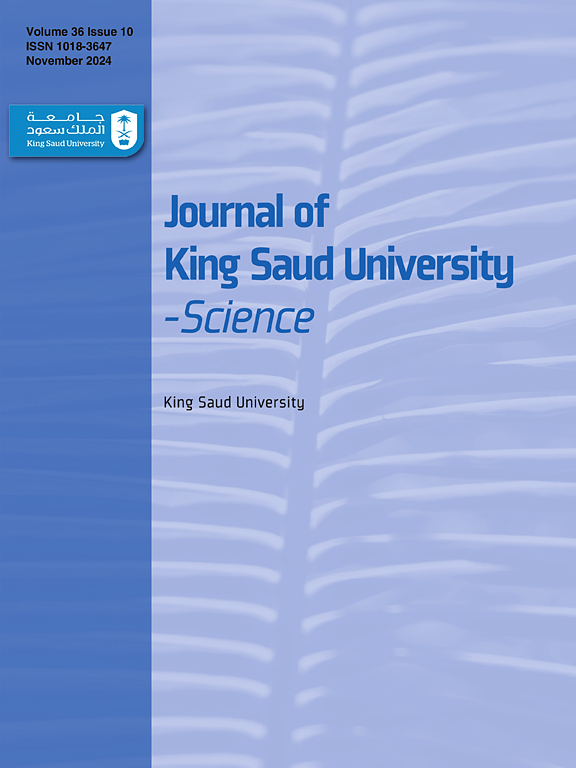Inhibitory effects of cuminaldehyde on human liver cytochrome P450 enzymes
IF 3.7
3区 综合性期刊
Q1 MULTIDISCIPLINARY SCIENCES
引用次数: 0
Abstract
This work explored the influence of cuminaldehyde on the metabolic activity of four primary human cytochrome P450 (CYP) enzymes. Human liver microsomes (HLM) with and without cuminaldehyde were incubated with specific substrates of different CYP enzymes. The influence of cuminaldehyde on “CYP1A2, CYP2C9, CYP2D6 and CYP3A4” activities was examined. The formation of specific metabolites was analyzed by HPLC analytical methods. It was observed that cuminaldehyde appears to have a negligible influence on CYP1A2 activity. However, CYP2C9 activity was significantly and potently inhibited by cuminaldehyde at all investigated concentrations. It was found that cuminaldehyde (1 µM) inhibited the most CYP2C9 enzyme activity with 64.87 % inhibition followed by CYP3A4 (38.90 %), CYP2D6 (25.76 %) and CYP1A2 (4.99 %). Inhibition of both CYP2D6 and CYP3A4 enzyme activity was observed in response to cuminaldehyde concentrations. Findings of the current investigation indicate that herb-drug interactions are very possible when cuminaldehyde is concurrently taken with medicines predominantly metabolized by CYP2C9 and CYP3A4. Cuminaldehyde should be tested further to examine how it affects CYP2C9 and CYP3A4-metabolized drugs.
积甲醛对人体肝脏细胞色素 P450 酶的抑制作用
这项研究探讨了积甲醛对四种主要人体细胞色素 P450(CYP)酶代谢活性的影响。将含有和未含有积甲醛的人肝微粒体(HLM)与不同 CYP 酶的特定底物进行孵育。研究了积甲醛对 "CYP1A2、CYP2C9、CYP2D6 和 CYP3A4 "活性的影响。采用高效液相色谱分析方法分析了特定代谢物的形成。结果表明,积甲醛对 CYP1A2 活性的影响微乎其微。然而,在所有研究浓度下,积雪醛对 CYP2C9 的活性都有明显而有效的抑制作用。研究发现,积甲醛(1 µM)对 CYP2C9 酶活性的抑制率最高,为 64.87%,其次是 CYP3A4(38.90%)、CYP2D6(25.76%)和 CYP1A2(4.99%)。在积雪草醛浓度的作用下,CYP2D6 和 CYP3A4 的酶活性都受到了抑制。目前的研究结果表明,当积雪草醛与主要由 CYP2C9 和 CYP3A4 代谢的药物同时服用时,很可能会发生草药与药物之间的相互作用。应进一步检测积雪草醛对 CYP2C9 和 CYP3A4 代谢药物的影响。
本文章由计算机程序翻译,如有差异,请以英文原文为准。
求助全文
约1分钟内获得全文
求助全文
来源期刊

Journal of King Saud University - Science
Multidisciplinary-Multidisciplinary
CiteScore
7.20
自引率
2.60%
发文量
642
审稿时长
49 days
期刊介绍:
Journal of King Saud University – Science is an official refereed publication of King Saud University and the publishing services is provided by Elsevier. It publishes peer-reviewed research articles in the fields of physics, astronomy, mathematics, statistics, chemistry, biochemistry, earth sciences, life and environmental sciences on the basis of scientific originality and interdisciplinary interest. It is devoted primarily to research papers but short communications, reviews and book reviews are also included. The editorial board and associated editors, composed of prominent scientists from around the world, are representative of the disciplines covered by the journal.
 求助内容:
求助内容: 应助结果提醒方式:
应助结果提醒方式:


